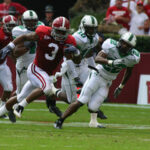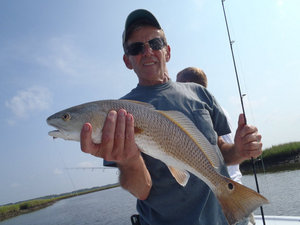Arm wrestling, sometimes called wrist wrestling, is probably among the original feats of strength and competition. It requires no equipment other than a flat surface for the competitors to defend and attack, and an opponent. Most people have probably tried it–it comes up somewhere after flipping a coin and rochambeau as a culturally-approved tiebreaker.
Here are a few tips to help you do better the next time you have a chance–or find yourself required–to compete. These are things I learned while hanging around with some very tough dudes, men who could toss a sinker 8×8 onto the top of a load, or wrangle those waist high milk cans used in dairy farming. My own experience with arm wrestling is probably a little more extensive than most: as a mill worker and all around backwoods type in my youth I was frequently challenged, or found myself in a position to challenge others, and I won most of the time, even against guys who, on paper, or at first glance, should have defeated me.
in 1980 and 1981 I competed in the Petaluma tournament that used to be considered the world’s championship. ABC TV was there both of those years, and in 81 I stood in line watching NFL star Russ Francis (tight end with the Patriots and 49ers) during his short “retirement” from the NFL as he tried out with ABC Sports, interviewing competitors in the registration line.
The Champ in those years was an enormous, athletically-built African-American man named Johnny Walker, but not all the top wrestlers had an especially athletic build. Some, probably most of the really good ones, used weight training or mechanical resistance training of some sort, but these were not yuppies working out in some fancy gym. A good many worked at dairies, farms, mills or something of the sort, and came by their strength honestly through the sciences of hay bale tossing and woodsplitting.
Good vs. grit
In the end, genetics determine who can be good at arm wrestling, and deliberate or incidental exercise separates the fakers from the contenders, but mental attitude determines who’s the best. If you’re lanky, it will be harder. The ideal build is stocky, with broad shoulders and a short span from elbow to wrist. Who looks best in a tank top has something to do with it, but there’s more tendon stubbornness than pretty-boy bicep in a really good arm wrestler. I love to challenge ballooned out, alpha male posers, because they rarely have the grit it takes to hold out. But I watch myself around guys who swing axes on the weekends, or know how to use a set of climbing spikes. As a practical matter, most of the time you will be matched up with someone from right down the street, who lacks the benefit of a frontier lifestyle. Unless one of you is substantially more powerful than the other, the match will come to some sort of stalemate, and that’s when attitude counts most.
The Grip
It helps to have a massive slab of beef in place of a hand, and a set of pliers for bones, but even if you don’t, you can maximize your leverage by letting your opponent drive his or her thumb-to-palm wedge deep into yours, in getting their grip. People seem to believe they are getting under the other person this way, but it doesn’t help. The best thing is to let them swivel and push around as much as they want, then kind of let yourself ease out of the clinch into a looser starting position. It’s a lot more like holding a baseball bat than trying to pry open a pickle jar. The person who doesn’t overdo it here usually gets the better start.
The Table
In tournaments, the table in a little over waist hight, nothing but legs and a solid platform. It has to be solid because wrestlers in the lower weight classes do a lot of acrobatic flinging about of the body once they are into a match, either trying to avoid a pin or complete one. I’ve found it makes a lot more sense to keep both feet squarely on the ground. In a really tough match you’ll want to be driving off your right toe at the moment of truth, rather than swinging around in the air. It all comes down to leverage.
The Opening
The first movement may not determine who wins, but it will determine who has the advantage at first, which is critical, but not always decisive. You’ll want to have your shoulder as directly above the hands as possible. In tournaments the contestants are usually ear to ear. The off hands–left–are in a fingertip clench flat beneath the raised right hands. When the ref lifts his hand, both wrestlers want to shift their weight to the front, displacing the other guy enough so that he or she can turn their wrist inward, and hold them against the chest, like a kitten. The one who gets the momentum started here then leans down, or attempts to, while the other one works to get back upright. If the one who gets the wrist advantage also gets the shoulder and elbow advantages, the match is quick. However sometimes a wrestler will lose the wrist advantage, but, especially if he or she is shorter-boned, be able to control the elbows, stopping their descent and struggling to bring it back.
The Pain
This is where arm wrestling begins to hurt, and epic battles are made. If the combatants are of relatively equal strength, the contest can play out into a protracted ordeal which ceases to be about physical strength and becomes much more about strength of will and/or desire not to lose to the other combatant. Grudge matches between stubborn old time rivals frequently turn out this way. The winner is frequently not the one who got the wrist advantage, but the one who halted that first push somewhere short of being pinned, and then, with one wrist painfully contorted in the other wrestler’s grip, blood vessels bulge, tendons and cartilage are torn apart or stretched, and bones break.
If you get into one of these matches, especially with a crowd watching and chanting your name, you probably know more about this than I do. You know it becomes a question as primal and stubborn as the first question asked by the first coach, Do you want it? If the answer is yes, hold on, bring your shoulder in, and try to overcome the weight advantage in the middle. Your wrist is bent back, but you still have an elbow, a bicep, and a shoulder. It’s like doing an especially difficult set of curls, or lifting a cow out of a well. Just don’t quit. If you weren’t pinned in the first five seconds, it’s because you’re actually stronger than your opponent. You now have to be more stubborn. Do you want it?
Victory
In my first match at the Petaluma tournament, I faced a lanky cowboy from Odessa, Texas. I can’t remember his name and I’m not sure I caught it at the time. The television lights were disorienting. The air was full of chalk from wrestlers slapping their dusted palms together. Some men wore tank tops and had muscles you could identify and name, others looked like tractors. My favorite contestant ever was Cleve Dean, a dairy farmer from Georgia. He was built like a smokehouse, and just as meaty. Since I weighed about 195 then, just a few pounds above my high school wrestling weight, I was in the heavyweight division and could have met up with him if I’d lasted longer in the elimination rounds.
Against the cowboy, I let myself slip into a defensive position right out of the start. He was quicker than me, and twisted my wrist toward himself. But he couldn’t get me more than about halfway down. My arm was probably an inch or so shorter than his. This gave me just enough mechanical advantage, combined with acquired muscle and tendon strength–the benefit of all that healthful exercise on the greenchain–to block his push. My wrist was doubled back, but I had the pivot. It took maybe three minutes, but once I had him moving backward the outcome was inevitable.
The actual process–those three minutes of pain–were as close as I’m likely to come to glory of that sort. The pain was extreme, and got worse as I pulled, and the harder I strained the more he tried to resist, until it didn’t make sense to measure or compare. It was just will against will. I remember trying to see what was going on around me but being compelled to watch my forearm slowly push his back, like turning back the hands of time, while the audience of a few hundred yelled encouragement like at a high school wrestling match. I was unknown to everyone but a few friends, but it was the effort they applauded; it’s always inspiring to see someone stave off defeat and stubbornly transform it into a gratifying, official victory. With Russ Francis and a cameraman witnessing the whole thing.
Walking back to my spot in the audience to await the next round, I was elated, but also conscious of the fact that my elbow was injured in some way. It just didn’t feel the same: some of the elasticity was gone.
My elbow tendon had given up the ghost. To all those coaches who ever exhorted me to sacrifice the body during some drill or other, there you go. I sacrificed that tendon, won that match versus the Texan, and have not quite straightened out my right arm since. I did not miss a day on the greenchain with the injured elbow, though. It wasn’t all that painful, just a little crooked.
I lost quickly in the second round, to a tall, work-muscled wrestler from Washington. I doubt I could have held up for long against him even without the freshly unwound elbow fibers.
I won a match in the first round the next year, but lost in the second again, and retired from world’s championships.
I’ll still willing to take on anybody I’m likely to encounter. The real secret to success at arm wrestling is not lengthy gym workouts with iron rings and rubber mats, but going up against the living tension of live weight is some consequential, repetitive effort. The haybarn, the woodpile, the manual lawn mower, all are perfect training, and useful in other ways.
And no, I haven’t lost since that second round match in’ 82.



